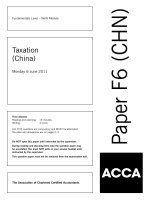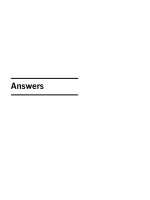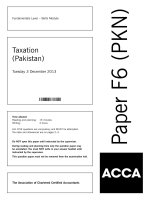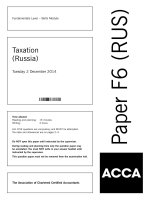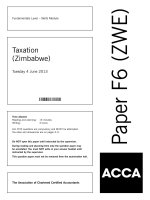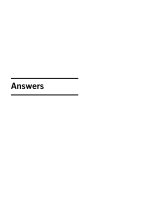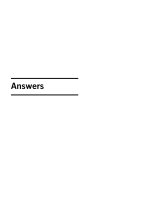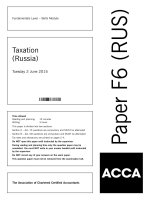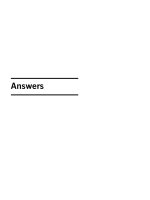ACCA f6 taxation russia 2014 dec question
Bạn đang xem bản rút gọn của tài liệu. Xem và tải ngay bản đầy đủ của tài liệu tại đây (252.4 KB, 12 trang )
Taxation
(Russia)
Tuesday 2 December 2014
Time allowed
Reading and planning:
Writing:
15 minutes
3 hours
ALL FIVE questions are compulsory and MUST be attempted.
Tax rates and allowances are on pages 2–4.
Do NOT open this paper until instructed by the supervisor.
During reading and planning time only the question paper may
be annotated. You must NOT write in your answer booklet until
instructed by the supervisor.
This question paper must not be removed from the examination hall.
The Association of Chartered Certified Accountants
Paper F6 (RUS)
Fundamentals Level – Skills Module
SUPPLEMENTARY INSTRUCTIONS
1. Calculations and workings need only be made to the nearest RR
2. All apportionments should be made to the nearest month, unless the law requires otherwise
3. All workings should be shown
TAX RATES AND ALLOWANCES
The following tax rates and allowances are to be used in answering all questions on this paper unless the question
states otherwise.
Children allowances
First and second child (up to 280,000 RR)
Third child (up to 280,000 RR)
1,400 RR per child
3,000 RR per child
General limitation on ‘property’ allowance
Investments in residential property and land for tax purposes
Statutory exclusions from taxable income
Prizes and awards
Gifts at work
Support payments
2,000,000 RR (upper limit)
4,000 RR (upper limit)
4,000 RR (upper limit)
4,000 RR (upper limit)
Maximum limit for social deductions listed below
120,000 RR (upper limit)
(medical, personal eductional, non-state pension insurance, voluntary pension insurance and additional insurance
contributions for the accumulated part of labour pension – subject to certain conditions set out in the law)
Educational deduction for children
50,000 RR (upper limit)
Professional deduction – general
– for designers
20%
30%
Gains on property sales:
– immovable property
– movable property
1,000,000 RR (upper limit)
250,000 RR (upper limit)
Housing allowance
2,000,000 RR (upper limit)
Statutory per diem rate for personal income tax:
– for domestic business trips
– for foreign business trips
700 RR per day
2,500 RR per day
Threshold interest rates for personal income tax purposes
Rouble bank deposits
Foreign currency bank deposits
Rouble loans
Foreign currency loans
CB refinancing rate increased by 5%
9%
2/3 of the CB refinancing rate
9%
Threshold interest rates for profits tax purposes
Foreign currency loans
Rouble loans received
0.8 of the CBR refinancing rate
1.8 of the CBR refinancing rate
2
Single threshold for social insurance contributions for the year 2014
(Note: several categories of insurance contributions subject to special incentives and reduced rates are not examined)
For employers (general) and individual entrepreneurs
Remuneration per annum
up to 568,000 RR
For employers (licences, copyrights, civil contracts)
For all categories of payers
Rate
30%
up to 568,000 RR
27.1%
excess over 568,000 RR
10%
Expenses for profits tax purposes
Voluntary medical insurance expenses (subject to conditions set out in the law) are limited to 6% of labour costs.
Voluntary life insurance expenses (subject to conditions set out in the law) are limited to 12% of labour costs.
Voluntary personal insurance against accidents at work resulting in death or permanent physical disability is limited to
15,000 RR per employee per annum.
Certain advertising expenses are limited to 1% of sales revenue.
Reimbursement of interest on employees’ mortgage loans is limited to 3% of labour costs.
Entertainment expenses (subject to conditions set out in the law) are limited to 4% of labour costs for the reporting period.
Special depreciation ratios
Fixed assets received under financial leasing
3 (upper limit)
Historic costs of non-current assets
40,000 RR (minimum)
Allowances for receivables
General limitation
Aged 0 to 44 days
Aged 45 to 90 days
Aged more than 90 days
10% of sales
0% of receivables
50% of receivables
100% of receivables
Value added tax (VAT)
Standard rate
Reduced rate
Exports
18%
10%
0%
General profits tax rate
20%
Tax on dividends for residents
Tax on dividends for foreign companies
9%
15%
Property tax rate
2.2%
Personal income tax rates
Basic rate
Higher rate
13%
35%
Tax on dividends for residents
9%
3
[P.T.O.
Central Bank refinancing rates (notional)
1 January to 30 April 2014
1 May to 30 September 2014
1 October to 31 December 2014
15%
7%
5%
Number of calendar days in calendar months for the year 2014
January
31
February
28
March
31
April
30
31
May
June
30
July
31
August
31
September
30
October
31
November
30
December
31
4
This is a blank page.
Question 1 begins on page 6.
5
[P.T.O.
ALL FIVE questions are compulsory and MUST be attempted
1
ZAO Venier (‘Venier’) is a production company engaged in the manufacture of milk products, which are sold in Russia
and in other CIS countries. Venier is 82% owned by a German company and 18% by a Russian company.
Venier always applies the accruals method for both value added tax (VAT) and corporate profits tax purposes and uses
a quarterly profits tax reporting period.
Venier applies the non-linear method of depreciation to tangible non-current assets and linear amortisation to
intangible assets for profits tax purposes. The company’s tax policy for the year 2014 stipulates its right to an
immediate 30% write-off on tangible non-current asset cost.
Venier applies the standard social insurance contribution rates without any incentives.
The following information is available for the year 2014. All amounts are inclusive of VAT unless stated otherwise.
Both raw materials purchased and finished milk products sold in Russia during the year 2014 are subject to the
reduced VAT rate. Packaging materials, production equipment and indirect expenses are subject to the standard VAT
rate, where applicable.
Sales, cash collections and prepayments for the year 2014 (in RR):
Domestic sales of products
Confirmed export sales to other countries
701,051,681
12,500,000
1 January
8,745,000
Prepayments balances from domestic clients
31 December
9,182,250
During the year 2014, only 80% of the milk products produced were sold, the remaining 20% were held in the
year-end inventory.
Direct expenses incurred in the production process in 2014 (in RR):
Raw materials (annual expense)
Packaging materials
58,760,460
8,320,481
The monthly wages of the 300 employees directly involved in the production of milk products were 25,000 RR (gross)
per capita per month throughout 2014.
Depreciation of non-current assets:
Category of
non-current asset
Production equipment
Quantity
1
Historic cost
per unit in RR
43,559,700
Monthly tax
depreciation rate
1.8%
Date put
into use
February 2013
Historic cost
per unit in RR
798,860
Patent term
Date put
into use
December 2013
Historic cost
per unit in RR
37,760
Date put
into use
June 2014
Indirect expenses incurred for the year 2014 (in RR):
Intangible asset: trademark
Name
Arnoble
Quantity
1
7 years
Other non-current assets:
Category of
non-current asset
Coolers
Quantity
150
The ordinary useful life of a cooler is three years.
Venier paid an insurance premium of 5,200,000 RR in respect of the annual obligatory property insurance for its
production equipment. In addition, Venier’s management decided to pay a voluntary business interruption insurance
premium of 4,300,000 RR.
6
During the year 2014, Venier incurred the following gross monthly salaries in respect of administrative staff:
General director – 610,000 RR
Middle management – 70,000 RR each for 51 employees.
In addition to their salary (as above), Venier provided all of its employees (production and management) with the
following types of insurance during the year 2014:
–
–
–
annual voluntary one-year medical insurance for the employees with a total insurance premium paid by Venier
in 2014 of 8,500,000 RR;
annual voluntary medical insurance for the relatives of employees with a total insurance premium paid by Venier
in 2014 of 3,300,000 RR;
annual voluntary personal insurance for permanent employees against accidents at work, with a total insurance
premium paid by Venier in 2014 of 7,350,000 RR.
Business entertainment expenses were incurred by Venier in respect of a quality audit visit by two German engineers
and two quality experts from its German shareholder in the year 2014. The amounts incurred, including VAT at the
standard rate where applicable, were as follows:
Transportation in Moscow (hotel – office – hotel) as invoiced by the taxi company
Official dinner in a restaurant, ‘Satislavi’
Interpreter’s services rendered by a professional licensed company
City guide for a visit to the Historical Museum
RR
11,328
29,500
16,992
2,360
Interest expense
On 16 November 2014, Venier received a three-year loan of 21,000,000 RR from its Russian shareholder with an
interest rate of 9.5% per annum. Interest is payable on the first day of the month following the month of interest
accrual (i.e. the first interest instalment was payable on 1 December 2014). No repayments of the loan principal were
made in 2014.
Tax losses brought forward
At 1 January 2014, Venier had the following unused tax losses brought forward:
2008 year – 227,000,000 RR
2010 year – 125,000,000 RR
2011 year – 97,000,000 RR
Required:
(a) Assuming that all the expenses referred to in the scenario are properly confirmed by the necessary
documents, calculate the taxable profit and corporate profits tax liability of ZAO Venier for the year 2014.
Show separately all elements of the taxable income and deductible expenses and identify any non-deductible
expenses by including them in the calculation with a zero (0). State the tax losses to be carried forward (if
any) at year end 2014.
Notes:
1. For social insurance contributions purposes, ignore all expenses other than salaries.
2. Ignore property tax.
3. For interest calculations, ignore the thin capitalisation rules.
(25 marks)
(b) Calculate ZAO Venier’s value added tax (VAT) liability for the year 2014. Show separately all elements of
output/input VAT.
(5 marks)
(30 marks)
7
[P.T.O.
2
Vladimir works as the head of the research and development department of the company ZAO Helicopter
(‘Helicopter’). He is married to Olga and they have one daughter, aged ten years. In 2014, Vladimir’s gross monthly
salary was 314,000 RR per month, except for the month of January when his salary was 270,000 RR.
During the year 2014, Helicopter provided Vladimir with the following benefits in addition to his salary:
–
Annual voluntary medical insurance for himself of 22,000 RR and for his daughter of 14,000 RR.
–
In March 2014, pension contributions of 10,700 RR were withheld from Vladimir’s salary and paid to the
licensed non-state pension fund GBV under the private pension plan for Helicopter’s employees.
–
In April 2014, a material donation as a reimbursement of medicines used for his medical treatment with a value
of 12,000 RR.
–
In May 2014, a birthday gift in the form of a professional photo camera with a market value of 35,000 RR.
–
In October 2014, an incentive trip worth 25,000 RR to the Altai region as a reward for his outstanding
achievements during the year.
–
In November 2014, emotional intelligence training with a licensed training company costing 67,000 RR.
On 11 January 2014, Vladimir took out an annual voluntary property insurance policy against flooding for his parking
place in the underground garage and paid the premium of 52,000 RR. The insured value of the parking place is
1,500,000 RR.
In March 2014, Vladimir’s parking place was damaged by flooding and he could not use it for three months. The
actual cost of the repair works confirmed by relevant documents was 1,000,000 RR. The insurance company (Hope)
accepted this incident as destruction of the property, which is covered by the property insurance policy, and paid the
insured value to Vladimir in May 2014.
On 14 February 2014, Vladimir paid 61,000 RR for one year of study for his daughter at the special skating school
in Moscow at the licensed Moscow Sports Academy.
On 21 March 2014, Vladimir paid 52,000 RR of educational expenses for his sister Anna, age 21, for her daily study
at the licensed State humanitarian university.
On 15 June 2014, Vladimir decided to sell his motorbike for its current value of 700,000 RR. He had acquired this
motorbike in August 2011 for a cost of 550,000 RR.
On 17 August 2014, Vladimir and Olga made the decision to acquire a new apartment for their family close to
Vladimir’s work location for 12,700,000 RR. The purchase of the apartment was financed as follows:
–
The sale of an apartment for 7,000,000 RR in July 2014. This apartment had been inherited from Vladimir’s
uncle in February 2011.
–
A three-year mortgage loan of 4,000,000 RR from his employer, Helicopter, with an interest rate of 2.5 % per
annum and interest payable on the seventh day following the end of the relevant quarter. The loan was received
on 1 August 2014 and the first interest payment was payable on 7 October 2014 for the period 1 August to
30 September 2014. The loan principal amount is to be repaid at the end of the loan period. Vladimir and Olga
each pay half of the interest on this loan.
–
1,700,000 RR paid from Vladimir and Olga’s personal savings.
Title of ownership of the new apartment was received by each member of the family in equal shares (one-third each)
in September 2014. Vladimir and Olga made a decision that Vladimir will claim his portion of the housing allowance
together with their daughter’s portion for the relevant expenses and interest and that Olga will claim her share
separately.
Vladimir provided the tax authorities with all ownership documents and the documents confirming the relevant interest
payments in October 2014. He managed to submit the document received from the tax authorities confirming his
entitlement to the ownership of the apartment to his employer in November 2014. Vladimir and Olga have never used
their housing allowance before.
8
Olga works as a freelance photographer. Her remuneration for the year 2014, split by month, was as follows:
January
February
March
April to December (in total)
Total
RR
85,000
90,000
102,000
502,000
–––––––––
779,000
–––––––––
The actual expenses incurred by Olga for her work during the year 2014, and confirmed by the appropriate source
documents, were 210,000 RR.
On 12 February 2014, Olga paid 27,000 RR for her annual voluntary medical insurance to a licensed Moscow clinic.
In May 2014, Olga participated in the lottery held by Photolife journal and, as a result of an advertising campaign,
won a prize of a trip to Mexico with a value of 115,000 RR.
Required:
Assuming that all the expenses incurred by Vladimir and Olga in 2014 are confirmed with proper supporting
documents:
(a) Calculate the personal income tax of Vladimir withheld at source by his employer for the year 2014,
assuming that he asked ZAO Helicopter for all possible deductions to be given at source.
(11 marks)
(b) Calculate the final settlement of Vladimir’s personal income tax liability (additional payment or refund) upon
submission of his 2014 personal income tax return.
(7 marks)
(c) Calculate the final settlement of Olga’s personal income tax liability (additional payment or refund) upon
submission of her 2014 personal income tax return.
(7 marks)
Notes:
1. Where possible, use all the personal income tax deductions which are potentially available to Vladimir and
Olga.
2. State separately the amounts of all personal income tax deductions claimed by Vladimir and Olga for the year
2014 and the deductions (if any) carried forward to future years.
3. Ignore social insurance contributions and value added tax (VAT).
4. The rate of professional deduction for a photographer is the same as that for a designer.
(25 marks)
9
[P.T.O.
3
In March 2014, OOO Molcor (‘Molcor’) started construction of new warehouse premises using its own workforce and
materials.
As a result of this activity, Molcor incurred the following expenses on a monthly basis during the year 2014.
The figures are inclusive of value added tax (VAT) at the standard rate, where applicable:
Note
Materials invoiced
Labour expenses (net of social insurance contributions (SIC))
Prepayments made to subcontractors
Services provided by subcontractors
1
2
3
4
March
RR
322,966
483,000
203,550
–
April
RR
339,114
507,150
213,728
407,100
May
RR
356,070
507,150
–
427,455
Notes:
1.
2.
3.
4.
VAT invoices were received from the suppliers for all of the materials.
The monthly wages of the employees involved in the construction do not exceed 47,000 RR per person.
Advance VAT invoices from the subcontractors have only been presented to Molcor in respect of the March 2014
prepayments.
At the date of preparation of Molcor’s VAT declaration for the second quarter of 2014, only 85% of the services
accrued in April and only 95% of the services accrued in May were supported with final VAT invoices received
by Molcor from its subcontractors.
The construction was completed and the new warehouse premises were put into use on 20 May 2014.
The constructed warehouse premises will be used in VAT taxable operations at 18% and the whole of the premises
qualifies for depreciation for profits tax purposes.
Required:
(a) State the recognition date for defining the value added tax (VAT) taxable base for construction works
conducted by a company’s own workforce.
(1 mark)
(b) Calculate the VAT liabilities of OOO Molcor for the first quarter and second quarter of the year 2014. Show
separately all elements of output/input VAT.
(10 marks)
(c) State the effect on the recoverability of the VAT incurred on the construction of the warehouse premises if
OOO Molcor:
(i)
Used the constructed warehouse premises for VAT non-taxable transactions only.
(2 marks)
(ii) Used the constructed warehouse premises for both VAT taxable and VAT non-taxable transactions.
(2 marks)
Note: Calculations are not required for part (c).
(15 marks)
10
4
(a) Maxim signed an author’s agreement for creating design projects with the agency, Pelikan, for annual gross
remuneration of 510,000 RR. Maxim’s actual expenses incurred during the year 2014 and confirmed by the
necessary documents are 102,000 RR.
Required:
(i)
Calculate the social insurance contributions (SIC) payable by Pelikan under each option available to
Maxim. State the conditions (if any) which must be fulfilled for each of the options to be available and
(4 marks)
identify the most efficient option in terms of SIC.
(ii) Advise Pelikan on the impact on the SIC calculations in (i) if Maxim had concluded a civil law agreement
with Pelikan for completing the same work and Pelikan paid him 510,000 RR for the work and, in
addition, reimbursed him the 102,000 RR of actual expenses incurred.
(1 mark)
(b) Maxim’s sister, Anastasia, works as a financial analyst for the Russian company OOO TVN. Her gross monthly
salary is 120,000 RR. In addition to her salary, Anastasia received the following benefits for the year 2014:
A net bonus accrued in 2014 but subject to payment in the year 2015 of 700,000 RR.
Relocation expenses (within the state limits) due to a move to the subdivision in Khanty-Mansiysk of
200,000 RR.
Reimbursement of business trip expenses (per diems, air tickets and accommodation confirmed by documents)
of 77,000 RR.
Reimbursement of 55,000 RR of interest paid by Anastasia on a mortgage loan for the acquisition of an
apartment.
A training seminar on budgeting for professional needs of 23,000 RR.
Canteen tickets of 7,500 RR.
Voluntary medical insurance of 21,000 RR.
Non-state pension insurance contributions (unrelated to additional insurance contributions for the accumulated
portion of pension) of 34,000 RR.
Voluntary medical insurance for Anastasia’s husband of 15,000 RR.
Compensation for Anastasia’s unused vacation of 107,500 RR.
Material aid of 16,200 RR.
Required:
(i)
Calculate Anastasia’s social insurance contributions (SIC) for the year 2014, clearly stating the taxable
and exempt items in compliance with the legislation.
(9 marks)
(ii) State the criterion relating to the employer which must be satisfied for the reimbursement of interest
paid on a mortgage loan by an employee to be treated as an exempt item for personal income tax
purposes.
(1 mark)
(15 marks)
11
[P.T.O.
5
OOO Elka (‘Elka’) is a Russian company, which is owned 10% by a Russian company, Pine; 65% by a Russian
company, Oak; and 25% by a Swiss company, Zitrone. Oak acquired its shareholding in Elka in 2012, Zitrone in
2013, and Pine in 2014. Oak is a 100% subsidiary of a German company, Mahogany GmbH. Elka can receive
financing from any of its shareholders.
On 9 October 2014, Elka made a treasury decision to receive a 15,627,907 CHF loan for a seven-year period from
Zitrone, with annual interest at a rate of 6%. Interest is accrued on a monthly basis and paid on the tenth day
following the end of the relevant quarter (i.e. interest for the quarter to 31 December 2014 is to be paid on 10 January
2015). No repayments of the principal amount will be made by Elka during the year 2014.
The following data is available in respect of Elka’s assets and liabilities as at 31 December 2014:
Assets
Liabilities, including
Tax liabilities
320,000,000 RR
170,000,000 RR
73,000,000 RR
Note: Relevant CHF/RR exchange rates are as follows (notional):
1 October
9 October
31 October
1 November
30 November
1 December
31 December
10 January
39.9
41.0
41.5
41.2
42.0
41.9
43.0
42.5
Required:
(a) Calculate the interest expense deductible for corporate profits tax by OOO Elka, the dividend (if any) deemed
payable to Zitrone and the withholding tax applicable for Quarter 4 of 2014, in respect of the loan from
Zitrone.
(11 marks)
(b) Determine the impact on the interest expense deductible, deemed dividend and withholding tax calculated
in part (a) if OOO Elka had received the same amount of loan in CHF from Oak.
(4 marks)
(15 marks)
End of Question Paper
12
